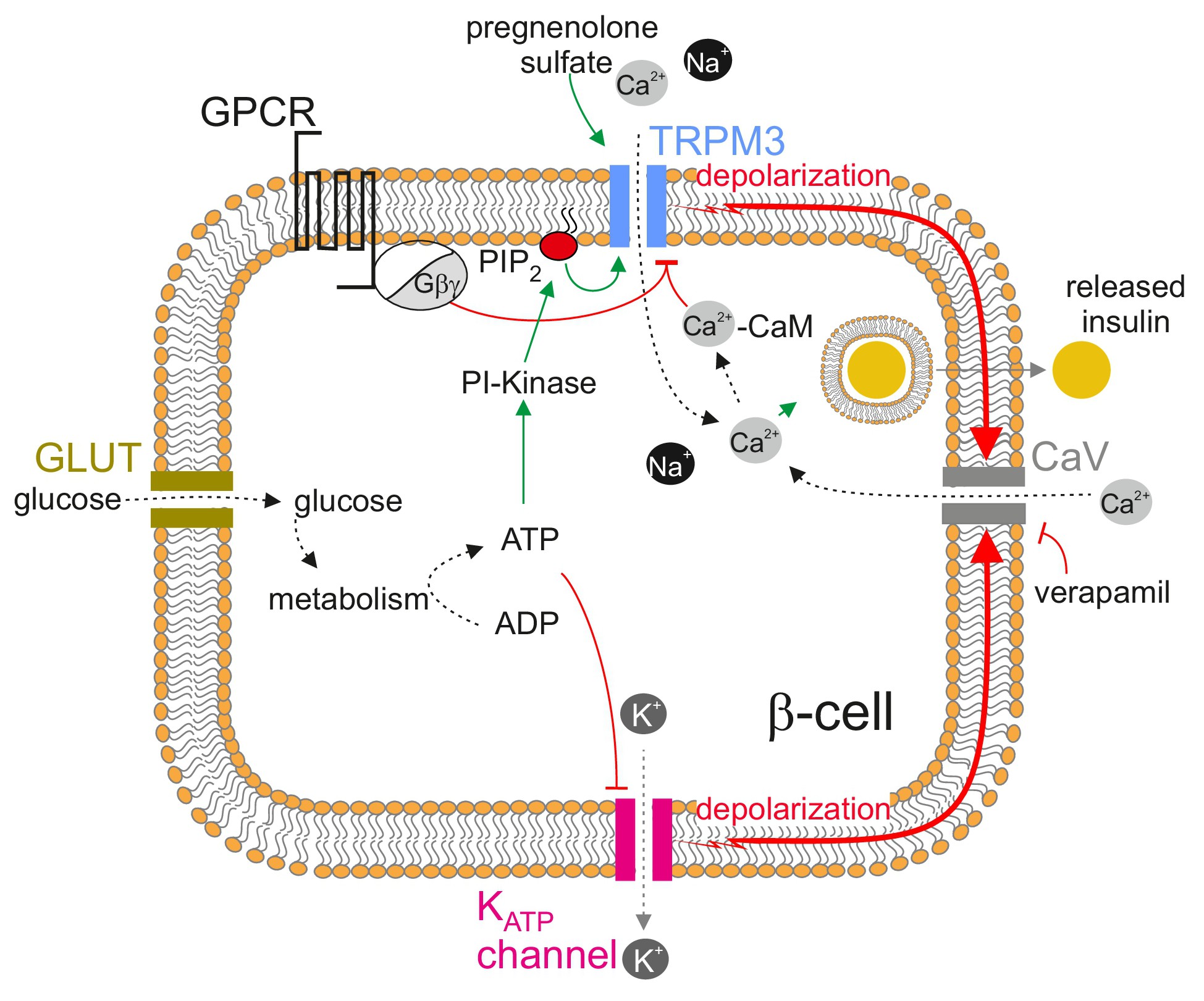Fig. 6. Contribution of TRPM3 channels to Ca2+ entry and insulin release in beta cells. Opening of TRPM3 channels after binding of the TRPM3 agonist pregnenolone sulfate promotes Ca2+ and Na+ influx and membrane depolarization which in turn triggers additional Ca2+ entry into the cell through verapamil-sensitive CaV channels resulting in the release of insulin. Glucose taken up by glucose transporters (GLUT) and metabolized in the cell increases the amount of ATP which blocks ATP-sensitive potassium (K+) channels (KATP channels). Their closure leads to membrane depolarization and the opening of CaVs. Independent of PS, glucose triggers TRPM3 activity conceivably via ATP-dependent activation of phosphatidylinositol-kinase (PI-Kinase), regeneration of phosphatidylinositol 4,5-bisphosphate (PIP2), and direct PIP2-mediated stimulation of TRPM3. TRPM3 activity is suppressed by direct interaction with Gβγ- subunits of G-protein coupled receptors (GPCR) as well as Ca2+/calmodulin (CaM).
